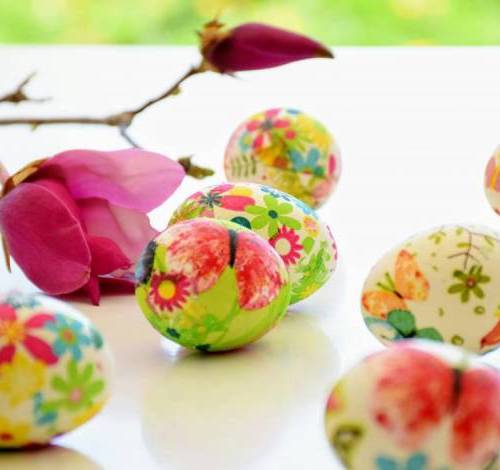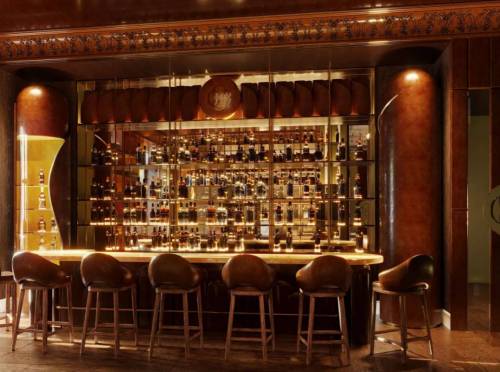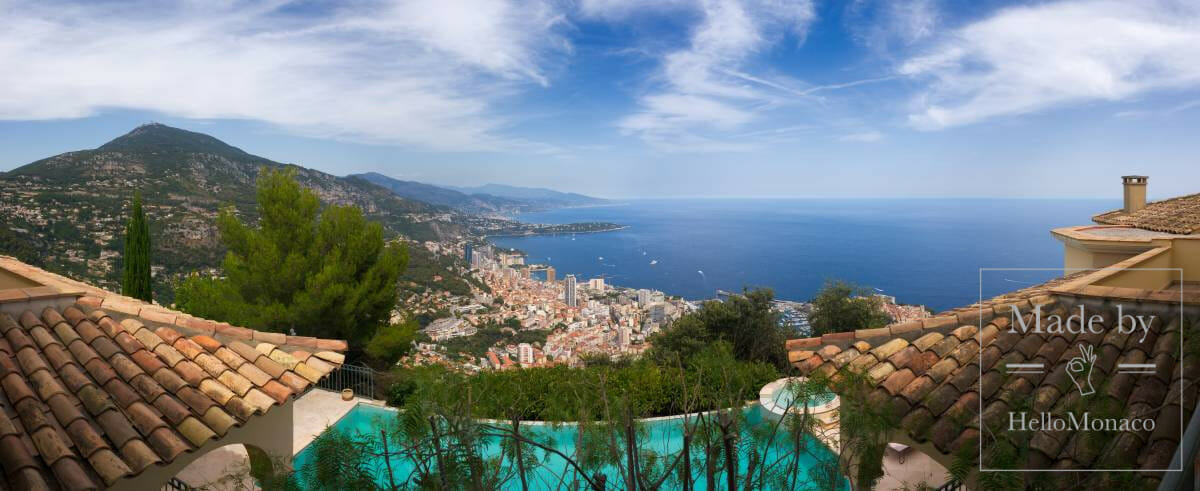“We are in a major crisis situation. This situation must be addressed by exceptional measures,” Franck Lobono, spokes person of the group of inhabitants of the Jardins d’Apolline, who is also a resident in the domain property complex, devotes a large part of his time to the technical problems of the Complex and their health and social consequences.
Mould, leaks, fungus, dark brown water coming out of the tap… The quality of life for tenants has become very degraded for many; All the more so because the damage affects an essential part of their intimacy: their home. “There are people, the elderly in particular, who are living with trauma. We ask for a psychological accompaniment cell.” No wonder some people just want to leave and never come back. “We are pleased to see that the government has activated its approach and is going to meet the residents after some words from the Prince. We feel that we are being taken into consideration by all authorities today. But what the tenants want today is action.” People are waiting for the state to provide massive rehousing as soon as possible,” says Lobono. “We have to move quickly.” This is what emerged from the last meeting orchestrated by a collective of inhabitants from the Jardins d’Apolline, which brought together 150 people in the Auditorium of the Technical Lycée on Monday evening. The enormous damage caused by the pipes in many of the apartments of the complex ‘Les Jardins d’Apolline’ which has 230 apartments, shops, offices and even a dance hall, haunt the daily lives of tenants. “There is an evident revolt against the bastards who have done this work.” Their names? “The Engeco Satri Group is responsible for the work provided. But we have to forget about searching for the guilty, in order to focus on what happens to us and think about solutions.”

Reconstruct everything
When and how will tenants be relocated? No one knows yet. But Franck Lobono wants to be constructive. It is therefore a matter of proposing solutions to the government and moving forward. “Today, we know that the pipes will be fitted so they can be accessible.” Nevertheless, the work will be colossal. All apartments, offices, shops must be partially or totally rebuilt. Estimated duration of work? “They’re saying about eight months. But it may be a year or so, so do not be fooled.” On Monday, the tenants were virtually unanimous to vote by show of hands so that “the State reconstructs everything, from the concrete up.” And it doesn’t matter if it takes time. “The ideal solution would probably be to empty the four blocks at once. But moving 230 apartments is complicated.” By way of comparison, the very tall and large L’Engelin building at the Jardin Exotique contains barely half the number of apartments required. For months, the uncertainty remains unresolved and raises anguish. Especially since the tenants also fear for their health. “We are asking for a medical observatory with specialists who know our environment and can eventually look after people.” It is true that the color of the water coming out of the faucets or the mould on the walls cause anxiety. So, in the meantime, bottles of water are distributed and the homes most affected have already been relocated.
It may sound “a little crazy” but “why not after all?” said a resident in the Auditorium of the Lycée technique and hotelier of Monaco. Monday night, Franck Lobono, spokesperson of the collective of the inhabitants of the Gardens d’Apolline, suggested the idea of installing a boat moored at Port Hercule to house the ship wrecked Apolline. “So, of course, this is not a solution – even a temporary one – for families with children, but singles or couples could perhaps accept it,” Lobono explains.
The Sovereign went to the residence to learn about the situation affecting 800 people

On Tuesday at noon, Prince Albert II scheduled a moment to go to the Jardins d’Apolline. Twice, the Sovereign has recently expressed himself on the major health and structural problems that affect this building. A visit to understand and to listen to the representatives of an association that brings together the 800 residents of the building. In the technical room of the building, the Sovereign, accompanied by the Minister of State and part of the government, was briefed on the work in progress.
Drinking water by mid-July?
For the time being, new valves are being installed on the water network for a “commando action” explained Olivier Lavagna, Director of Public Works, to the Sovereign. Following the installation of a filtration system (for iron) and UV sterilization (for bacteria), “The objective is to return to potable water by mid-July,”
If the failure of the grids is responsible for the current crisis situation, the moisture on the floors of the building comes from defective waterproofing of the shower trays in half of the apartments.
The sovereign continued his visit in the family apartment of a resident, currently under construction, who were relocated to two floors lower, during time of construction. The floors of the rooms were dismantled, routes were made in walls and ceilings to divert the networks and clean up the premises.
A delegate to the case
During the visit, the sovereign exchanged with members of the Jardins d’Apolline Residents Association, who proposed some solutions to the residents’ looming relocation. “It needs to be done case by case,” assured Prince Albert II, aware that the situation for each home will be different. A mission that should be entrusted to an interministerial delegate who is to be appointed on Friday to take charge of the file. It will most likely be Albert Croesi.
Legionella Bacteria in the water at ‘L’Île aux Bambins’ Nursery
Water was tested at the ‘L’Île aux Bambins’ nursery, in the building ‘Helios’, located in the extension of the Jardins d’Apolline. A bacteria that has no connection with the disaster caused by the pipelines of the neighboring complex, Jardins d’Apolline, but which adds a little more concern to residents. Bacteria in the water taken from the nursery on the 19th of June is 5.3 times higher than the authorized threshold. Immediately “the shower heads were disassembled, the network was purged and anti-legionella filters were installed.” Said Jean-Michel Cucchi, chairman of the housing commission in the National Council. “We ask that analyzes be carried out at the Helios building and that a medical watch unit be set up by the Directorate of Health Affairs at the CHPG for all potentially affected persons. Thoughts go out to the families of the Jardins d’Apolline who placed their children at the ‘L’Île aux Bambins’…”.
Statement from the National Council: “The case has been dealt with. Samples will continue to be collected. We must not mix this up with the Jardins d’Apolline case.”
Legionella levels above the limit of 1000 CFU / litre are not common. But they have occurred in the past, notably “two years ago in primary schools equipped with showers” explains Jean Lorenzi, general medical doctor with managing sanitary action.
Is Legionella dangerous for children?
In general, no. Young, immune-compromised adults, the elderly and the disabled can have serious consequences with the risk of pneumonia.
5300 CFU / litre, the rate found in the samples, is that a lot?
Yes and no. At this stage, the necessary measures must be taken.
Which ones?
The first recommendation is to let the water run, to avoid being in contact with water that would have stagnated, lukewarm in the pipes. Hot water from the tap which is at 55 degrees at least is enough to avoid the development of the bacteria. And to kill it, it is necessary to give it a thermal shock at 70 degrees for two minutes. The addition of chlorine is also recommended.
Can we logically think that the bacteria is present in the whole building?
We will take samples in other points.
Is Legionellosis a common disease?
No… It is subject to mandatory reporting. There have been no cases in Monaco this year.
What is the frequency of testing?
On average, it is done once or twice a year in schools and nurseries.
“Treated Immediately”
Mayor Georges Marsan, accompanied by Chloé Boscagli Leclercq, communal councilor for early childhood, and Isabelle Cellario, head of the social services department, visited the L’Île aux Bambins nursery. “We welcomed the parents,” said the mayor. Georges Marsan, also a pharmacist, explains the situation.
What is the current situation?
Today it’s clean. The L’Île aux Bambins was treated immediately on Tuesday. The government has been very responsive. No cases of Legionellosis have been reported.
Can we say that we have escaped the disease?
Legionellosis takes between 2 to 10 days to declare itself. In case of doubt, families can consult the CHPG Emergency.
What was the date of the previous analysis?
I cannot give a specific date.
Are the pipes sufficiently maintained?
The building is new! The water is probably limestone and stagnant, which favors the presence of Legionella.
Have you ever encountered this problem elsewhere?
No.
Have parents decided to withdraw their children from the nursery momentarily?
No parent made that decision. Today it is useless since the problem is dealt with. The nursery was already scheduled to close in three days anyway.








